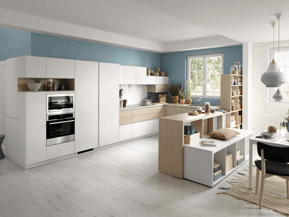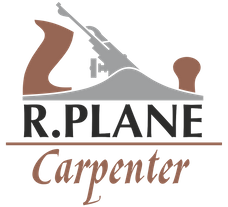
In the approach of the smokestack, the hearth moved from the focal point of the space to one divider, and the primary physical hearths were fabricated. The fire was lit on the top of the development; a vault underserved to store wood. Pots made of iron, bronze, or copper began to Kitchens Norwich supplant the earthenware utilized before. The temperature was constrained by hanging the pot higher or lower over the fire, or putting it on a trivet, or straightforwardly on the hot remains. Utilizing open fire for cooking (and warming) was hazardous; fires wrecking entire urban areas happened now and again.
Computerized framework :

Leonardo da Vinci developed a computerized framework for a pivoting spit for spit-broiling: a propeller in the chimney stack made the spit turn without help from anyone else. This sort of framework was generally utilized in more affluent homes. Starting in the late Middle Ages, kitchens in Europe lost their home-warming capacity significantly more and were progressively moved from the living region into a different room. The parlour was presently warmed by a cockle stove, worked from the kitchen, which offered the enormous benefit of not occupying the room with smoke.
Liberated from smoke and earth, the family room accordingly started to fill in as a space for social capacities and progressively turned into an exhibit for the proprietor’s riches. In the high societies, cooking and the kitchen was the area of the workers, and the kitchen was separate from the parlours, here and there even a long way from the lounge area. More unfortunate homes regularly didn’t yet have a different kitchen; they kept the one-room course of action where all exercises occurred, or at the most had the kitchen in the passage corridor.
Woodcut of a kitchen: Kitchen inside, around 1565
The archaic smoke kitchen (or Farmhouse kitchen) stayed normal, particularly in rustic farmhouses and by and large in less fortunate homes, until some other time. In a couple of European farmhouses, the smoke kitchen was in customary use until the center of the twentieth century. These houses frequently had no stack, however, just a smoke hood over the chimney, made of wood and covered with dirt, used to smoke meat The smoke rose pretty much openly, warming the higher up rooms and shielding the woodwork from vermin.
Innovative advances:
A normal provincial American kitchen of 1918 at The Sauer-Beckmann Farmstead (Texas, USA)
Innovative advances during industrialization carried significant changes to the kitchen. Iron ovens, which encased the fire totally and were more productive, showed up. Early models incorporated the Franklin oven around 1740, which was a heater oven proposed for warming, not for cooking. Benjamin Thompson in England planned his “Rumford oven” around 1800. This oven was significantly more energy effective than prior ovens; it utilized one fire to warm a few pots, which were hung into openings on top of the oven and were accordingly warmed from all sides rather than just from the base. Nonetheless, his oven was intended for huge kitchens; it was too huge for homegrown use. The “Oberlin oven” was a refinement of the procedure that brought about a size decrease; it was protected in the U.S. in 1834 and turned into a business accomplishment for certain90,000 units sold throughout the following 30 years.